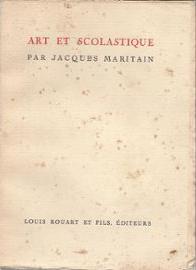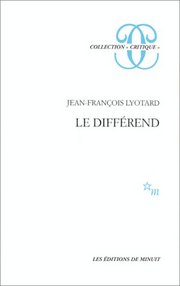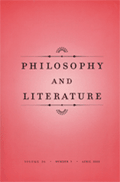 W
WAesthetic Journalism: How to Inform Without Informing is a book by Italian writer, curator and artist Alfredo Cramerotti. Recognising the "blurring of margins between artistic and information practices" as a main feature in contemporary culture, Cramerotti sets out the Who, What, Where, When and How, and Why of Aesthetic Journalism.
 W
WThe Aesthetic Mind: Philosophy and Psychology is a 2011 book edited by Elisabeth Schellekens and Peter Goldie. The contributors try to provide a new understanding of aesthetics and the experience of art based on philosophical reflections and evidence from empirical sciences.
 W
WAesthetics and Morality is a 2007 book by Elisabeth Schellekens, in which the author provides an account of the main ideas and debates at the intersection of aesthetics and moral philosophy.
 W
WAgalma: Rivista di Studi Culturali e di Estetica is an academic journal dedicated to cultural studies and aesthetics. It was established in 2000 by the philosopher Mario Perniola and a group of Italian and international intellectuals in response to the widely felt discontent with the international and Italian philosophical and cultural contexts at the time. Its purpose is to provide a forum for the theoretical work around cultural studies and aesthetics in Italy. The title of the journal reflects its aims, contents, and orientation. "Agalma" is an ancient Greek word that means ornament, gift, image, and statue. It possesses a broad meaning in which economic value, aesthetic aspects, cultural studies, and symbolic power come together. The first part of an issue is usually monographic and connected to the theme of an international conference organized by the Chair of Aesthetics of the University of Rome Tor Vergata and other cultural institutions. The other sections include discussions, interviews, and reviews covering a wide range of concepts associated to both Western and non-Western philosophical thought. Among the collaborators: Jean Baudrillard, Bernardo Bertolucci, Luc Boltanski, Peter Burke, Bruno Latour, Michel Maffesoli, Richard Shusterman, Joseph Kosuth.
 W
WArt and Scholasticism is a 1920 book by the French philosopher Jacques Maritain. It is considered his major contribution to aesthetics. According to Gary Furnell, the work "was a key text that guided the work of writers such as Allen Tate, Caroline Gordon, Sally and Robert Fitzgerald, Francois Mauriac, Thomas Merton, John Howard Griffin, Flannery O’Connor and T.S. Eliot." Maritain's Thomist-Aristotelian distinction between Art and Prudence was highly influential on the sculptor Eric Gill, and were developed further in the seminal essay on theological aesthetics, entitled 'Art and Sacrament', by poet and painter David Jones.
 W
WCritical Horizons: A Journal of Philosophy and Social Theory is a peer-reviewed academic journal covering philosophy, aesthetics, and critical social theory. It is published by Routledge and the editors-in-chief are Jay Bernstein, Jean-Philippe Deranty, Emmanuel Renault, and John Rundell. It was published by Brill Publishers in the past.
 W
WThe Differend: Phrases in Dispute is a 1983 book by the French philosopher Jean-François Lyotard.
 W
WFudōshin is a state of equanimity or imperturbability. It is a philosophical or mental dimension to Japanese martial arts which contributes to the effectiveness of the advanced practitioner.
 W
WIdea art is an art form in which small individual ideas take precedence over grand concepts or ideologies and generic aesthetic, material and disciplinary concerns. The artist works not only like an architect or an engineer, as in the case of conceptual art, but also like a curator or an art writer.
 W
WIn Japanese society, particularly in historical feudal Japan, isagiyosa is a virtue, translated with "resolute composure" or "manliness". Isagiyosa is the capability of accepting death with composure and equanimity. It stands besides other central virtues such as public-spiritedness, loyalty (seijitsusa), diligence (kinbensa) and steadiness (jimichisa).
 W
WThe Journal of Aesthetics and Art Criticism is a quarterly peer-reviewed academic journal covering the study of aesthetics and art criticism. It was published by Wiley-Blackwell on behalf of the American Society for Aesthetics up to January 2021 when it shifted to Oxford University Press.
 W
WLate Modernism: Art, Culture, and Politics in Cold War America is a history book about late modernism as a historical period of aesthetics between modernism and postmodernism. The book was written by Robert Genter and published by University of Pennsylvania Press in 2010.
 W
WLessons on the Analytic of the Sublime is a 1991 book about the philosopher Immanuel Kant's Critique of Judgment (1790), focusing on Kant's description of the sublime, by the French philosopher Jean-François Lyotard. The book received positive reviews following the appearance of its English translation in 1994.
 W
WLine of beauty is a term and a theory in art or aesthetics used to describe an S-shaped curved line appearing within an object, as the boundary line of an object, or as a virtual boundary line formed by the composition of several objects. This theory originated with William Hogarth, and is an essential part of Hogarth's theory of aesthetics as described in his 1753 book Analysis of Beauty. According to this theory, S-shaped curved lines signify liveliness and activity and excite the attention of the viewer as contrasted with straight lines, parallel lines, or right-angled intersecting lines, which signify stasis, death, or inanimate objects.
 W
WA Book of Wisdom and Lies is a collection of fables and tales written by Sulkhan-Saba Orbeliani between 1686 and 1695.
 W
WMiyabi (雅) is one of the traditional Japanese aesthetic ideals, though not as prevalent as Iki or Wabi-sabi. In modern Japanese, the word is usually translated as "elegance," "refinement," or "courtliness" and sometimes to a "sweet loved one".
 W
WPhilosophy and Conceptual Art is a 2007 book edited by Elisabeth Schellekens and Peter Goldie. The contributors deal with the philosophical questions raised by conceptual art.
 W
WPhilosophy and Literature is an academic journal founded in 1977 by Denis Dutton. It explores the connections between literary and philosophical studies by presenting ideas on the aesthetics of literature, critical theory, and the philosophical interpretation of literature. The journal, which has been characterized as "culturally conservative", aims to challenge "the cant and pretensions of academic priesthoods by publishing an assortment of lively, wide-ranging essays, notes, and reviews that are written in clear, jargon-free prose".
 W
WSensoaesthetics is the application of scientific methods to the study of the aesthetic, sensual and emotional aspects of materials.
 W
WSignificant form refers to an aesthetic theory developed by English art critic Clive Bell which specified a set of criteria for what qualified as a work of art. In his 1914 Book Art, Bell postulated that for an object to be deemed a work of art it required potential to provoke aesthetic emotion in its viewer, a quality he termed "significant form." Bell's definition explicitly separated significant form from beauty; in order to possess significant form, an object need not be attractive as long as it elicits an emotional response.
 W
WThe Story of Art, by E. H. Gombrich, is a survey of the history of art from ancient times to the modern era.
 W
WTsundoku is acquiring reading materials but letting them pile up in one's home without reading them. It is also used to refer to books ready for reading later when they are on a bookshelf.
 W
WZhu Guangqian was one of the founder of the study of aesthetics in 20th-century China.